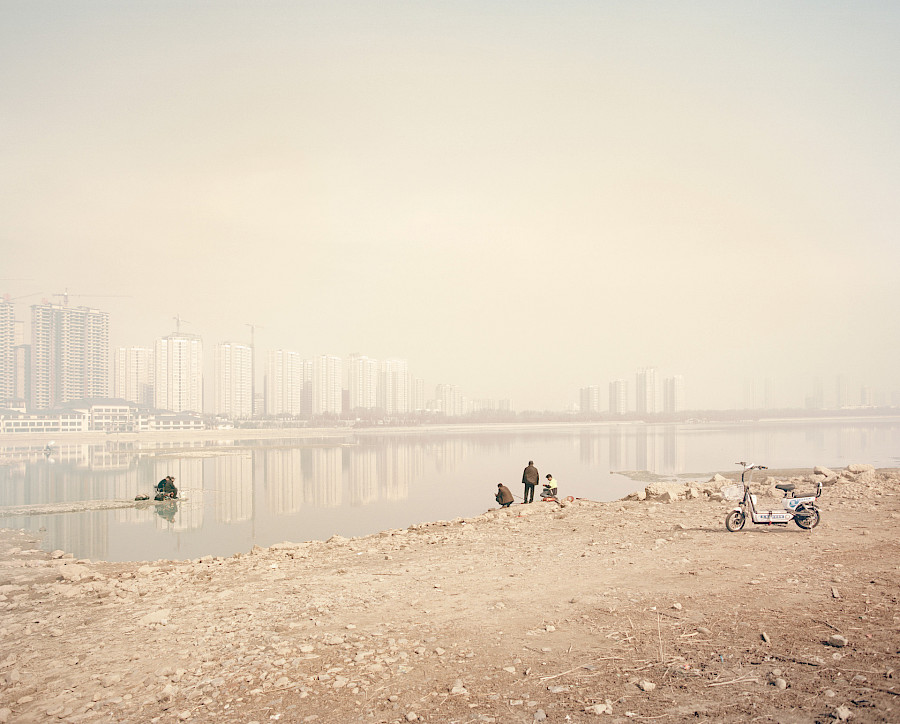Universal Experience
2017
- Chromoluxe X Lucie Foundation Fine Art Scholarship 2021 - Honourable Mention
- Unpaper Gallery United fundraiser 2021
- The Earth Issue Freedom Fundraiser 2020
- Open Walls Arles - Galerie Huit Arles 2020
- Magenta Foundation Flash Forward 2019
- PH Museum Photography Grant Shortlist 2019
- Ooshot Award Exhibition 2019
- Wanderlust - Month of Photography los Angeles 2019
- Nominated for The Ooshot Award 2018
- Bow Open Show - Bow Arts Trust 2017
- Renaissance Photography Prize 2017
- Creative Review Photography Annual winner of Best in Book 2017
- Royal Photographic Society International Photography Exhibition 161
Picturesque, Sublime and Dangerous: Landscapes with Chinese Characteristics
It’s the immensity of Catherine Hyland’s landscapes that first grab you. Look at her picture of the mineral-stained hills of Zhangye Danxia Landform Geological Park in China’s Gansu Province and you feel human life slipping away. These are expansive images where the horizon disappears into a haze of barren mountainsides. There is no life here, no vegetation to soften the impression of aridity and heat. It’s alien, it’s barren and it’s dead.
It’s a wild landscape but at the same time it’s a landscape that’s been tamed for human consumption. There on the right of the frame is a fence, a viewing platform. It’s a landscape made for tourists. Yes, we could be on another planet, but it’s a planet that you can visit on a daytrip, a planet you can photograph with your phone. It has a road and that road leads back to civilisation. It’s the picturesque and the sublime wrapped in one, a contemporary Instagram planet, or (in China at least) a WeChat planet.
There are fences and viewing points throughout Hyland’s images, marking the right spot to view from, the right picture to take. In another image from Gansu, we see an empty flattened viewing space with fenced off pathways heading in four directions. On the one hand this fencing off represents an enclosure, on the other it recognises the danger of the landscape. People are fenced off for their own protection because this is a landscape that does threaten human life. It is a desertified landscape that encroaches and invades and through history has brought death and destruction.
In addition to taming the landscape through enclosure, Hyland also photographs the psychological control of the land through the giant statues of historical figures that have been erected across the places she visits. In Lushan, a 128m high statue of the Buddha gazes serenely over the landscape, in Yuncheng, the warrior GuanYu looks over the mountains, while in Mongolia, a giant statue of Genghis Khan dominates the world that he was destined to conquer.
Here a number of surveillance strategies are at play, we have a multitude of gazes. From the Buddha’s passive yet domineering acceptance to Khan’s desire to conquer and dominate, these images show the opposing ways in which we psychologically manage a landscape that we are both part of and alien to.
This is particulary relevant in China where fast-track urbanisation has alienated the population both from the countryside and from their own histories. As construction has changed the face of China’s cities so the past has been eradicated, the humiliations of repeated invasion and occupation buried under a steel-sheathed mass of statement architecture.
The attempts to control and manage the landscape are both a part of this overcoming of the past, and also an attempt to transform nature into a theme park for contemporary consumption. Implicit in this attempt is the idea that the earthquakes, the landslides, the famines, invasions and the floods are a thing of a great and colourful past. They are part of a history that has been transformed into nostalgia. But at the same time, Hyland recognises this might not be the case, that there might be an underlying anxiety to this enclosed world. Her image of a mountaintop memorial in Mongolia’s capital, Ulaanbataar, is not just a monument to Soviet war dead. It is also a reminder that the land does not pay heed to humanity’s wishes. It can and it will bite back no matter how much we try to tame it. The only question is when.





















